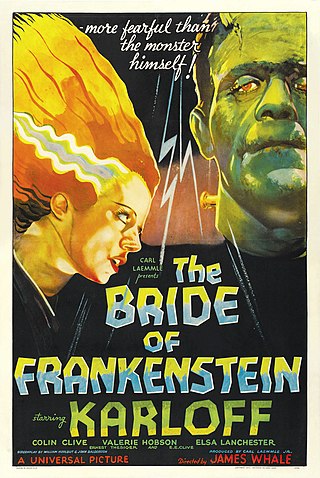
Bride of Frankenstein is a 1935 American science fiction horror film, and the first sequel to Universal Pictures' 1931 film Frankenstein. As with the first film, Bride of Frankenstein was directed by James Whale starring Boris Karloff as the Monster and Colin Clive as Dr. Frankenstein. The sequel features Elsa Lanchester in the dual role of Mary Shelley and the bride. Colin Clive reprises his role as Henry Frankenstein, and Ernest Thesiger plays the role of Doctor Septimus Pretorius. Oliver Peters Heggie plays the role of the old blind hermit.

Frankenstein is a 1931 American pre-Code science fiction horror film directed by James Whale, produced by Carl Laemmle Jr., and adapted from a 1927 play by Peggy Webling, which in turn was based on Mary Shelley's 1818 novel Frankenstein; or, The Modern Prometheus. The Webling play was adapted by John L. Balderston and the screenplay written by Francis Edward Faragoh and Garrett Fort, with uncredited contributions from Robert Florey and John Russell.

Frankenstein's monster or Frankenstein's creature, and commonly but erroneously known as Frankenstein, is a fictional character who first appeared in Mary Shelley's 1818 novel Frankenstein; or, The Modern Prometheus as the main antagonist. Shelley's title thus compares the monster's creator, Victor Frankenstein, to the mythological character Prometheus, who fashioned humans out of clay and gave them fire.
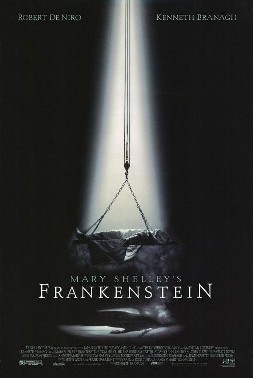
Mary Shelley's Frankenstein is a 1994 science fiction horror film directed by Kenneth Branagh who also stars as Victor Frankenstein, with Robert De Niro portraying Frankenstein's monster, and co-stars Tom Hulce, Helena Bonham Carter, Ian Holm, John Cleese, Richard Briers and Aidan Quinn. Considered the most faithful film adaptation of Mary Shelley's 1818 novel, Frankenstein; or, The Modern Prometheus, despite several differences and additions in plot from the novel, the film follows a medical student named Victor Frankenstein who creates new life in the form of a monster composed of various corpses' body parts.

Victor Frankenstein is a fictional character and the main protagonist and title character in Mary Shelley's 1818 novel, Frankenstein; or, The Modern Prometheus. He is a Swiss scientist who, after studying chemical processes and the decay of living things, gains an insight into the creation of life and gives life to his own creature. Victor later regrets meddling with nature through his creation, as he inadvertently endangers his own life and the lives of his family and friends when the creature seeks revenge against him. He is first introduced in the novel when he is seeking to catch the monster near the North Pole and is saved from near death by Robert Walton and his crew.
Dr. Waldman is a fictional character who appears in Mary Shelley's 1818 novel, Frankenstein; or, The Modern Prometheus and in its subsequent film versions. He is a professor at Ingolstadt University who specializes in chemistry and is a mentor of Victor Frankenstein.

Doctor Septimus Pretorius is a fictional character who appears in the Universal film Bride of Frankenstein (1935) as the main antagonist. He is played by British stage and film actor Ernest Thesiger. Some sources claim he was originally to have been played by Bela Lugosi or Claude Rains. Others indicate that the part was conceived specifically for Thesiger.

Frankenstein is a fictional character appearing in American comic books published by DC Comics. He is based on the Frankenstein's monster character created by Mary Shelley.
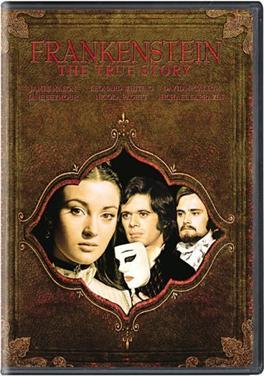
Frankenstein: The True Story is a 1973 British made-for-television film loosely based on the 1818 novel Frankenstein; or, The Modern Prometheus by Mary Shelley. It was directed by Jack Smight, and the screenplay was written by novelist Christopher Isherwood and his longtime partner Don Bachardy.

Mary Shelley's 1818 novel Frankenstein; or, The Modern Prometheus, and the famous character of Frankenstein's monster, have influenced popular culture for at least a century. The work has inspired numerous films, television programs, video games and derivative works. The character of the Monster remains one of the most recognized icons in horror fiction.
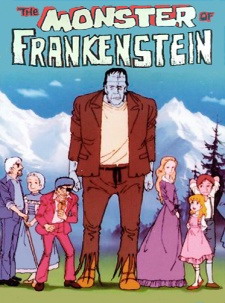
Kyōfu Densetsu Kaiki! Frankenstein, is a 1981 Japanese anime television film loosely based on Mary Shelley's 1818 novel Frankenstein; or, The Modern Prometheus and the Marvel comic book Monster of Frankenstein. In this 98-minute violent, adult-oriented film, the creature was portrayed as a misunderstood monster, who only wanted to be loved. The film was dubbed and released in the U.S. in 1984. The dubbed version never had a title but was advertised as both Monster of Frankenstein and Frankenstein Legend of Terror.

Frankenstein is a 2004 American television miniseries based on the 1818 novel Frankenstein; or, The Modern Prometheus by Mary Shelley. It follows the original novel more closely than other adaptations.
Frankenstein is a 2007 British television film produced by Impossible Pictures for ITV. It was written and directed by Jed Mercurio, adapted from Mary Shelley's 1818 novel Frankenstein; or, The Modern Prometheus to a present-day setting. Dr. Victoria Frankenstein, a female geneticist, accidentally creates a monster while growing her son's clone from stem cells as an organ donor in an effort to prevent his imminent death. The film was broadcast on 24 October 2007, to an average audience of 3.6 million.

Frankenstein; or, The Modern Prometheus is an 1818 novel written by English author Mary Shelley. Frankenstein tells the story of Victor Frankenstein, a young scientist who creates a sapient creature in an unorthodox scientific experiment. Shelley started writing the story when she was 18, and the first edition was published anonymously in London on 1 January 1818, when she was 20. Her name first appeared in the second edition, which was published in Paris in 1821.
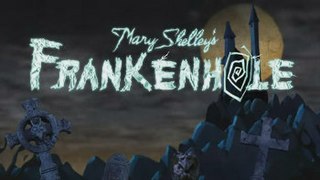
Mary Shelley's Frankenhole is an American adult stop motion-animated television series created by Dino Stamatopoulos for Cartoon Network's late night programming block Adult Swim. The series premiered on June 27, 2010 and ended on March 25, 2012, with a total of 20 episodes, over the course of 2 seasons.

Frankenstein is a stage adaptation by Nick Dear of Mary Shelley's 1818 novel Frankenstein; or, The Modern Prometheus.

Elizabeth Frankenstein is a fictional character first introduced in Mary Shelley's 1818 novel Frankenstein; or, The Modern Prometheus. In both the novel and its various film adaptations, she is the fiancée of Victor Frankenstein.
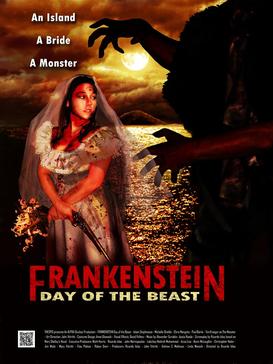
Frankenstein: Day of the Beast is a 2011 independent horror film directed by Ricardo Islas, based on the 1818 novel Frankenstein; or, The Modern Prometheus by Mary Shelley. It premiered with a limited theatrical release in the United States on November 27, 2011.
"The Doctor" is the fifth episode of the second season of the American ABC fantasy/drama television series Once Upon a Time, and the show's 27th episode overall, which aired on October 28, 2012.

Frankenstein is a film series of horror films from Universal Pictures based on the play version by Peggy Webling and the 1818 novel Frankenstein; or, The Modern Prometheus by Mary Shelley. The series follow the story of a monster created by Henry Frankenstein who is made from body parts of corpses and brought back to life. The rest of the series generally follows the monster continuously being revived and eventually focuses on a series of cross overs with other Universal horror film characters such as The Wolf Man. The series consists of the following films: Frankenstein (1931), Bride of Frankenstein (1935), Son of Frankenstein (1939), The Ghost of Frankenstein (1942), Frankenstein Meets the Wolf Man (1943), House of Frankenstein (1944), House of Dracula (1945) and Abbott and Costello Meet Frankenstein (1948).


















